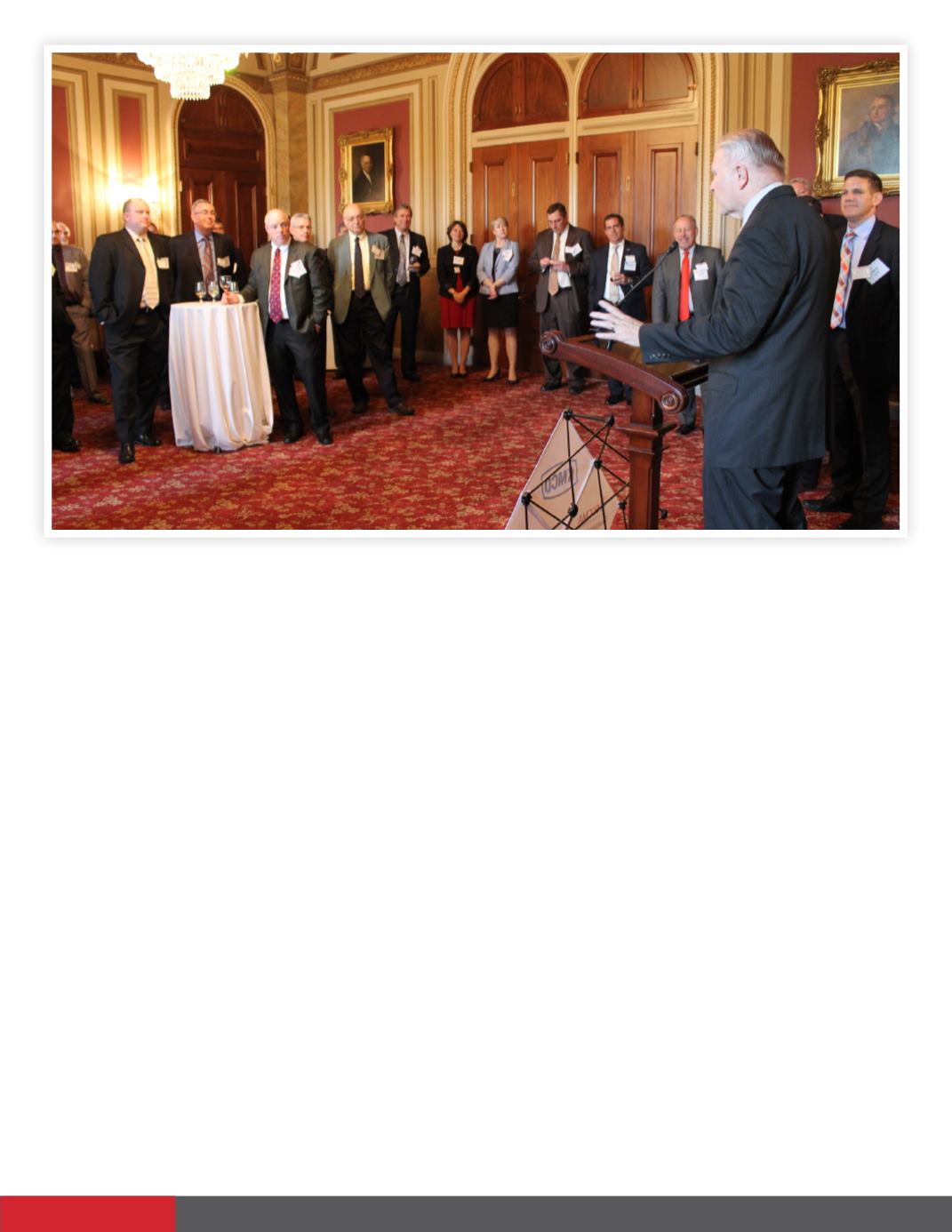
Business View - October 2015 75
and specialty “arms” of larger corporations. To date,
there are approximately 200 members in four classes:
1. Manufacturers – U.S. facilities that manufacture
chemicals
2. International – non-North American firms that sell to
U.S. customers but do not have manufacturing facilities
located in North America
3. Distributors – companies that buy and resell chemi-
cals
4. Affiliate – includes consultants, equipment providers,
service providers, testing labs, etc.
“We don’t represent any one family of products,” Sloan
said. “Our members make a broad range of intermedi-
ate chemicals, which go into products ranging from phar-
maceuticals to fracking. You have one extreme that’s
considered life sciences – for example, making highly
specialized molecules that help products such as Lipitor
perform (i.e., the active ingredient). On the other extreme
are molecules that go into fracking (in oil and gas drill-
ing) that are considered a true industrial application. In
between are the chemicals that go into detergent, cos-
metics, food, automotive, construction - hundreds of
thousands of products that our members collectively
manufacture for different applications.”
SOCMA hasmany long-timemembers. Some are second-
or third-generation family businesses – typically, with a
revenue range of $20 – $50 million and employing 50
– 150 people. There is a collaborative synergy between
SOCMA membership and the major global chemical en-
tities. Eighty-five percent of members are considered
SMEs (small and medium enterprises), but smaller divi-
sions of the big names, such as BASF and Ashland, also
participate.
“On the regulatory front, we work directly with a plant,”
Sloan said. “If you have five or six different operating
plants across the country, maybe one has a specific niche
that can benefit from SOCMA assistance. We represent
a line of products, as long as they are in the specialty
arena and not considered a commodity, and are a good
MANUFACTURING


